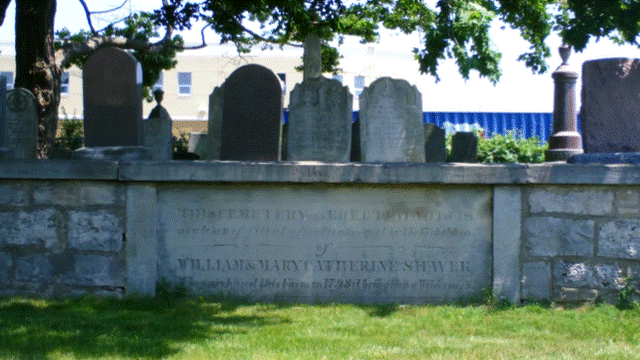 A Brief History of the United Empire Loyalist Settlement in Ancaster
A Brief History of the United Empire Loyalist Settlement in Ancaster
During and after the American Revolution, from 1776 through the 1780s, hundreds of cold and hungry people fled into the wilderness of Canada. The Maritime Provinces, Quebec and Ontario received an influx of Loyalists. Twenty-two refugees and their families crossed at Niagara and soon made Ancaster their home. Among these names were Lampman, Bowman, Smith, Aikman, Latham, Wilson, Book, Westbrook and Shaver, many of whom had fought with Butler’s Rangers.
Who were these people? Where did they come from and why?
They were mostly British, German and Dutch who had lived in the New England states for many years. Many were ex-soldiers who had served in one of the 52 loyal British regiments during the American Revolutionary War of 1775-6. These people had sacrificed property, homes and possessions to retain for themselves and their descendants the proud distinction of remaining British subjects, and they wished to continue to live under British laws of tolerance and religious freedom.
After the Treaty of Separation (of America from Britain) was signed in 1783, King George III ordered all land between Lakes Erie, Huron and Ontario...nearly 3 million acres...to be purchased from the Mississauga Indians. Numerous Indian Reserves were established and land was offered to the Loyalists. Each man was required to swear an oath of allegiance to the Crown. He would then receive 200 acres of bush, ¼ mile frontage on the Indian Trail and 1 ¼ miles deep. A roadway must be cleared in each side, making a road 66 feet wide....the length of the surveyor’s chain. A log cabin had to be built within 2 years, so there would be no absentee owners. There would be a side road every 6th lot. Each man received some nails, a few panes of glass, an axe, a cow between 2 families and a plough between 3.
In addition, General Haldimand, the British commander in Upper Canada, provided land for loyal Iroquois band members who wished to settle in Canada. Led by Chief Joseph Brant, the Indians travelled through Ancaster en route to this land, a twelve-mile strip of land along the Grand River, six miles on each side, from Lake Erie to its source.
In 1798 John Shaver received Lot 50, Concession 2 in the present Ancaster Township. It was about where Tiffany falls and the Chedoke Hospital are today in Hamilton. When his son, William, became 21 years old, he applied for and received a Crown grant of 200 acres-Lot 35, Concession 3 on the main Indian Trail above Ancaster. At this time there were about 200 people in what is now Wentworth County.
These loyalist refugees laid the foundation of Ontario and the Maritimes. They worked hard, acquired and cleared more land, had strong religious principles and raised large families. Having come from ancestors who prized education and religion, they first built schoolhouses, held church meetings in the different homes and eventually built churches. Most of these Loyalist families were Methodists. They fought for British Canada in the War of 1812-14 when the Americans invaded Canada.
King George III of England bestowed upon these loyal British subjects and their children and descendants the unique honour of using the initials U.E. after their name, signifying their belief in a united Empire. This is the only hereditary honour in Canada.
This quote from a carving in the Kleinburg Art Gallery perhaps describes the contribution of these early settlers:
“In every part of our infant country, we have the quiet graves of those who subdued the wilderness, who beautified the land by their toil and left not only the fruits of their labours but the thoughts and feelings that cheered them in their solitude.”


